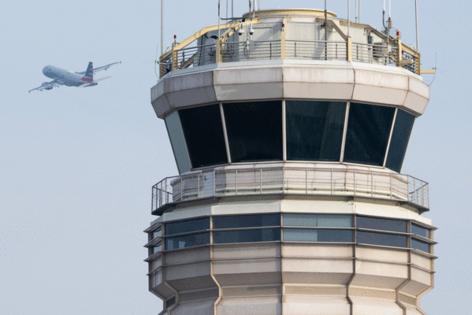FAA orders more time off to curb traffic controller fatigue
Published in News & Features
The U.S. Federal Aviation Administration is requiring air traffic controllers to take more time off between shifts to address fatigue risks flagged by a panel of experts.
FAA Administrator Michael Whitaker is directing controllers to take 10 hours off between shifts and a minimum of 12 consecutive hours off before a midnight shift, he said in a statement Friday. The changes will be effective in 90 days.
The directive comes after the FAA tapped a three-person panel — led by Mark Rosekind, a former National Transportation Safety Board member and sleep expert — in December to review air traffic controller fatigue and identify ways to address the issue.
Increased fatigue among controllers has “the potential to introduce errors, incidents, and accidents,” the panel said in a report released Friday.
“When you lose sleep or disrupt the clock, pretty much every aspect of human capability can be degraded or impaired,” Rosekind said on a call with reporters.
Air traffic controllers have been strained in recent years as halts to hiring and training during the Covid-19 pandemic led to staffing shortfalls.
Following the FAA’s announcement, the National Air Traffic Controllers Association, a union that represents controllers, said immediate adoption of the new rules “may lead to coverage holes in air traffic facilities’ schedules” because of staffing shortages.
“Requiring controllers to work mandatory overtime to fill those holes would increase fatigue and make the new policy nothing more than window dressing,” the union said.
The FAA panel’s findings follow a spate of close calls on airport runways, including a near-collision Thursday at Ronald Reagan Washington National Airport in which an air traffic controller cleared a Southwest Airlines plane to cross a runway at the same time a JetBlue flight was starting its takeoff roll.
The panel offered a total of 58 recommendations on how the FAA could address fatigue, including four top priorities that could be enacted within 90 days. Those includes eliminating a rotating schedule — commonly referred to as the “rattler” — that risks disrupting a person’s sleep cycle, which in turn can impair controllers’ decision-making and mental acuity on the job, according to the panelists’ report.
The report also said sufficient staffing will be important for the FAA to address exhaustion and fatigue among air traffic controllers.
“The longer it takes to definitively address this staffing discrepancy, the longer staff-related fatigue risks will exist in the system and be compounded over time,” according to the report.
The agency is doing “everything within our power to increase controller hiring,” Whitaker said on the call. The FAA met its 2023 goal of hiring 1,500 controllers and expects it will also pass this year’s goal of hiring 1,800 more, he said.
The FAA recently announced a program that would allow selected institutions to offer curriculum on par with that provided at the Air Traffic Controller Academy to enable the agency to hire more people who can immediately begin training at a facility upon graduation.
(With assistance from Mary Schlangenstein.)
©2024 Bloomberg L.P. Visit bloomberg.com. Distributed by Tribune Content Agency, LLC.







Comments